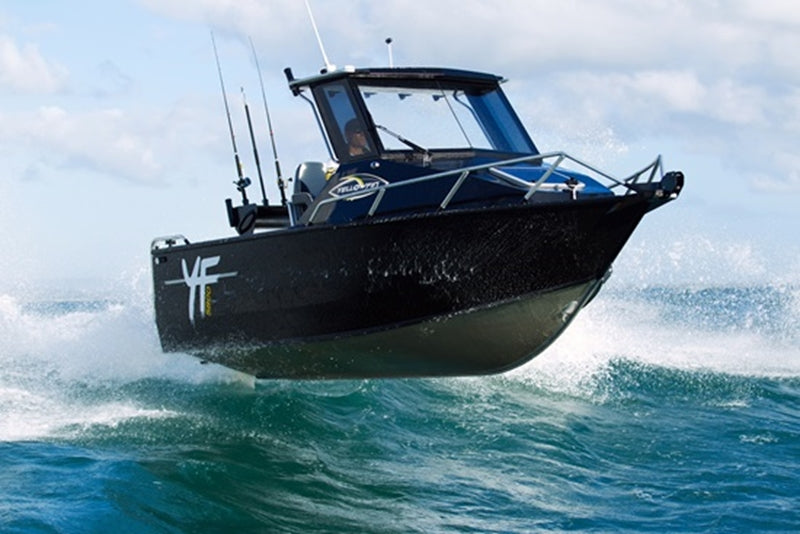
There's no way better way to spend a day than out in the open water. From taking the family out to the lake to beat the heat to a solo fishing adventure into the deep sea, boating is a fun way to enjoy nature and your favourite recreational activities.
Of course, whenever you step off the dock, it's important to prioritise safety on your watercraft. High winds or an incoming storm can result in rough waters that are tougher to navigate, and since these factors are outside of your control, it's important to know how to properly operate your boat in choppy surf.
Luckily, boating in rough waters appears more intimidating than it actually is. With the knowledge and tools on hand to help you steer your boat, you can operate your watercraft safely in these conditions.
Whether you're cruising on a choppy lake or taking your fishing boat out to sea, here's our guide for staying safe in bumpy surf.
1. Reduce your speed
First and foremost, it's important to reduce your speed in rough waters. According to Salt Water Sportsman, cruising at reduced speeds allows you to have a better reaction time to oncoming waves. You will need to adjust your throttle to ride big waves at the correct angle and avoid taking on water. Additionally, you never want your engine to be completely exposed in a trough because you will lose your momentum and steering ability.
2. Understand your angles
In large swells, especially like those you'll find out at sea, you must operate your boat correctly. Instead of tackling large waves head-on, it's widely acknowledged that taking a hedging that is 45 degrees to the wave is best for slicing through them - while also reducing the risk of rolling, taking on water or having your engine out of the water.
3. Know how to calculate wind knots
Wind creates big waves and being able to determine knots is crucial for predicting if you will encounter whitecaps out at sea, according to Better Boat. The source recommended downloading an app to help you determine wind knots before setting off on your adventure. Determining wind conditions can help you prepare for rough waters, or give you indication that it's time to head back to shore.

4. Tie down your cargo
According to Club Marine, it's important for boats navigating heavy weather out at sea to maintain their centre of gravity. Along with adjusting your boat's speed and trim, ensure your cargo is tied down and distributed evenly to mitigate the chances of rolling over in a strong wave. This is especially necessary for fishing boats that carry a lot of additional accessories like rods, coolers and bait. Always check to see your equipment is tied down and your boat is maintaining its centre weight before heading out on your adventure into choppy waters.
5. Track your route
Finally, it's crucial to track your route if you know you're heading out into heavy seas so you can avoid bottoming out or otherwise damaging your boat. Boat U.S. explained that, when navigating a big swell, you should never enter water shallower than 2.5 to 3 times the total swell height to avoid bottoming out in the trough. Similarly, when you anchor in rough waters, avoid doing so in shallow water where swells are larger. Mapping your trip to avoid shallow inlets ensures you stay safe.
Navigating rough waters can be a breeze when you know how to operate your boat, but always make sure to know your limits and head back to shore when you don't feel comfortable.
If you're interested in a new boat to take out into the sea, browse our selection of fully rigged, clearly priced watercraft or call us to find out more about our discounted products.




